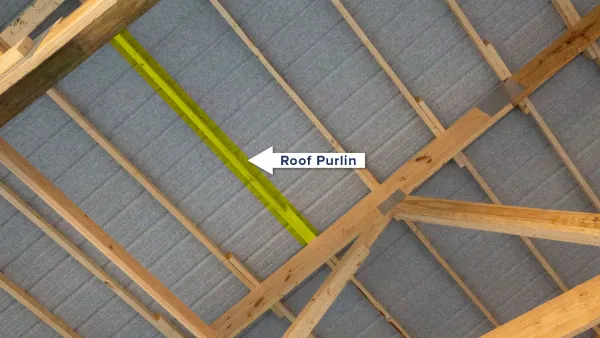Chapter 1: Understanding Window Performance
Windows play an important role in maintaining the thermal comfort and energy efficiency of a building. Understanding how heat transfers through windows is fundamental to making informed decisions about window selection and improvement strategies.
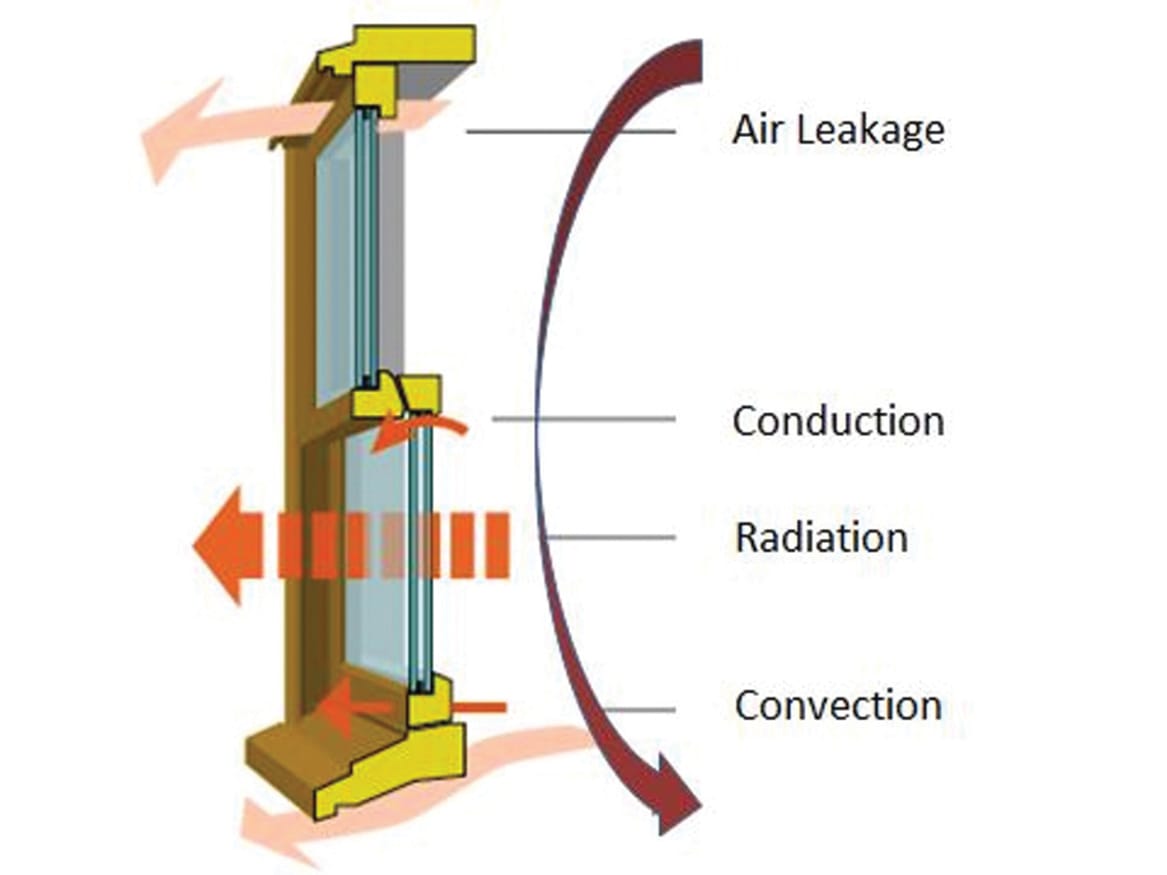
1.1 Heat Transfer Mechanisms Through Windows
1.1.1 Radiation
Radiation is one of the primary mechanisms through which heat transfers through windows. Infrared radiation emitted by warm objects indoors is absorbed by glass and conducted to the outside, leading to heat loss during colder months. Conversely, solar radiation in the form of visible light and near-infrared wavelengths can penetrate windows, contributing to heat gain indoors, particularly in warmer climates.
1.1.2 Conduction
Conduction involves the direct transfer of heat through the materials of a window. For instance, aluminium frames, known for their high thermal conductivity, can facilitate significant heat transfer between the interior and exterior environments. Additionally, conduction can lead to convective currents, exacerbating heat loss during winter months.
1.1.3 Air Infiltration
Air infiltration occurs when outdoor air penetrates into a building through gaps or cracks around the window frames. Poorly sealed windows can result in high air infiltration rates, leading to energy inefficiency and decreased thermal comfort, especially in regions prone to strong winds.
1.2 Impact of Poor Window Performance on Energy Efficiency
1.2.1 Loss of Heating Energy
Windows with inadequate insulation properties can account for substantial energy loss, particularly during colder seasons. The inefficiency of single-pane windows, in particular, can significantly contribute to higher heating costs and decreased comfort levels indoors.
1.2.2 Increase in Cooling Costs
In warmer climates, inefficient windows can lead to increased cooling costs as they allow solar heat to penetrate indoors, requiring additional energy for air conditioning. The inability to control solar heat gain through windows can result in indoor temperatures rising above desired levels, leading to discomfort and higher energy bills.
1.2.3 Importance of Proper Window Selection
Proper window selection is required for optimising energy efficiency and thermal comfort in buildings. Factors such as U-value, solar heat gain coefficient, and window orientation should be carefully considered to ensure optimal performance in various climatic conditions.
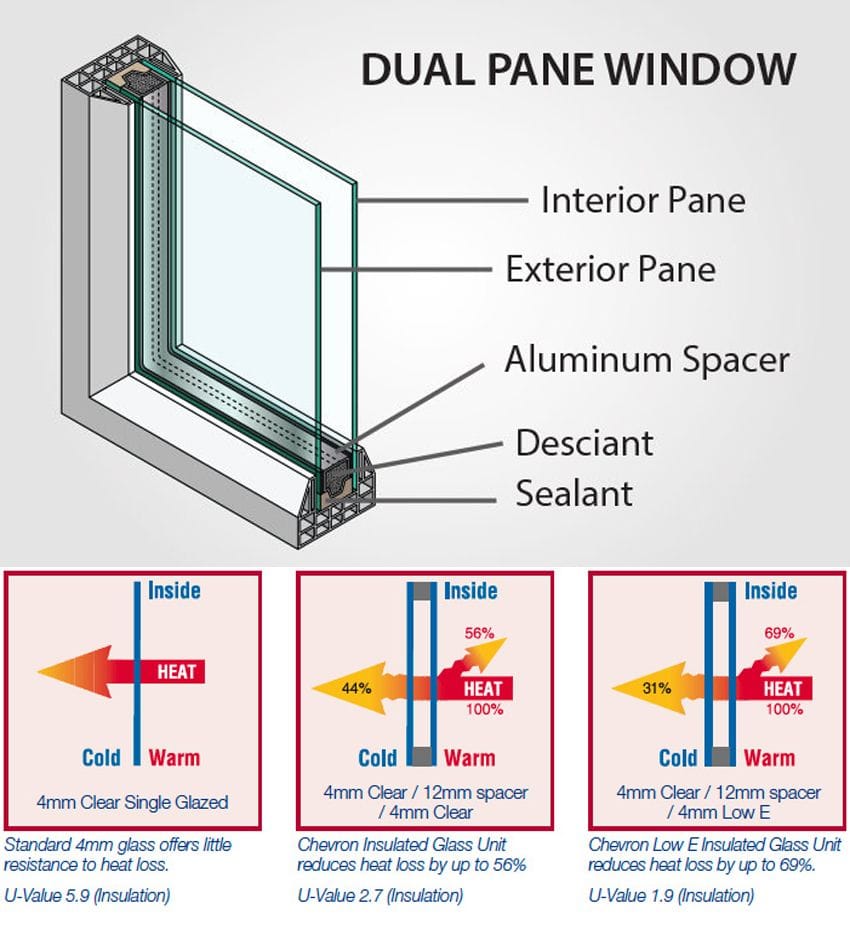
Chapter 2: Key Factors Influencing Window Performance
When it comes to window performance, several key factors play a pivotal role in determining the energy efficiency and thermal comfort of a building. Understanding these factors is helpful for making informed decisions when selecting or upgrading windows.
2.1 Whole-Window U-value (Uw)
2.1.1 Definition and Significance
The U-value, also known as the U-factor, measures the rate of heat transfer through a window due to the temperature difference between the indoor and outdoor environments. It quantifies the window's insulation properties, with lower U-values indicating higher insulating ability and, consequently, lower heat transfer rates.
2.1.2 Real-world U-value Range
Real-world U-values for windows can vary depending on factors such as the number of panes, the type of glazing, and the framing material. Single-pane windows typically have higher U-values, ranging from 1.1 to 1.3 W/m²K, whereas high-performance triple-pane windows can achieve U-values as low as 0.8 W/m²K or lower.
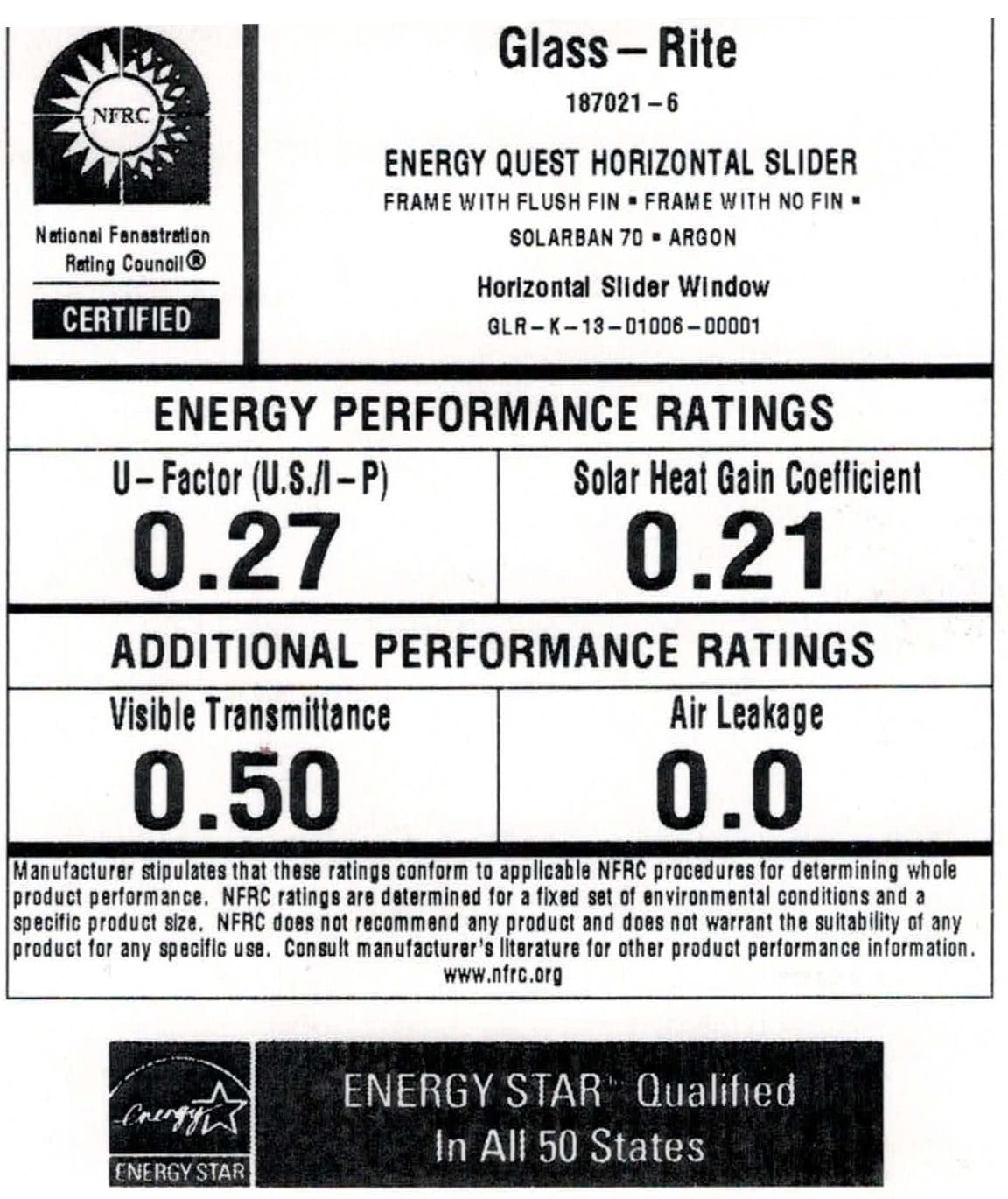
2.2 Whole-Window Solar Heat Gain Coefficient (SHGCw)
2.2.1 Understanding SHGCw
The Solar Heat Gain Coefficient (SHGCw) measures the amount of solar radiation that enters a building through the window as heat. It represents the fraction of solar radiation transmitted through the window, absorbed by the glass, and subsequently released into the interior space.
2.2.2 Real-world SHGC Range
SHGC values typically range from 0 to 1, with lower values indicating less solar heat gain and higher values indicating more significant solar heat gain. Windows with low SHGC values are more suitable for hot climates as they minimise heat gain, while those with higher SHGC values are preferable in colder climates to harness solar heat during winter.
2.3 Interplay between U-value and SHGCw
2.3.1 Optimal Balance for Different Climates
Achieving an optimal balance between U-value and SHGCw is crucial for maximising energy efficiency and comfort in different climatic regions. In cold climates, prioritising low U-values helps minimise heat loss, while in hot climates, selecting windows with lower SHGC values reduces solar heat gain and cooling loads.
2.3.2 Considerations for Window Selection
When selecting windows, home owners should consider their climate zone, orientation, and shading conditions to strike the right balance between U-value and SHGCw. Consulting with a qualified energy advisor or utilising energy modelling software can help determine the most suitable window specifications for specific environmental conditions.
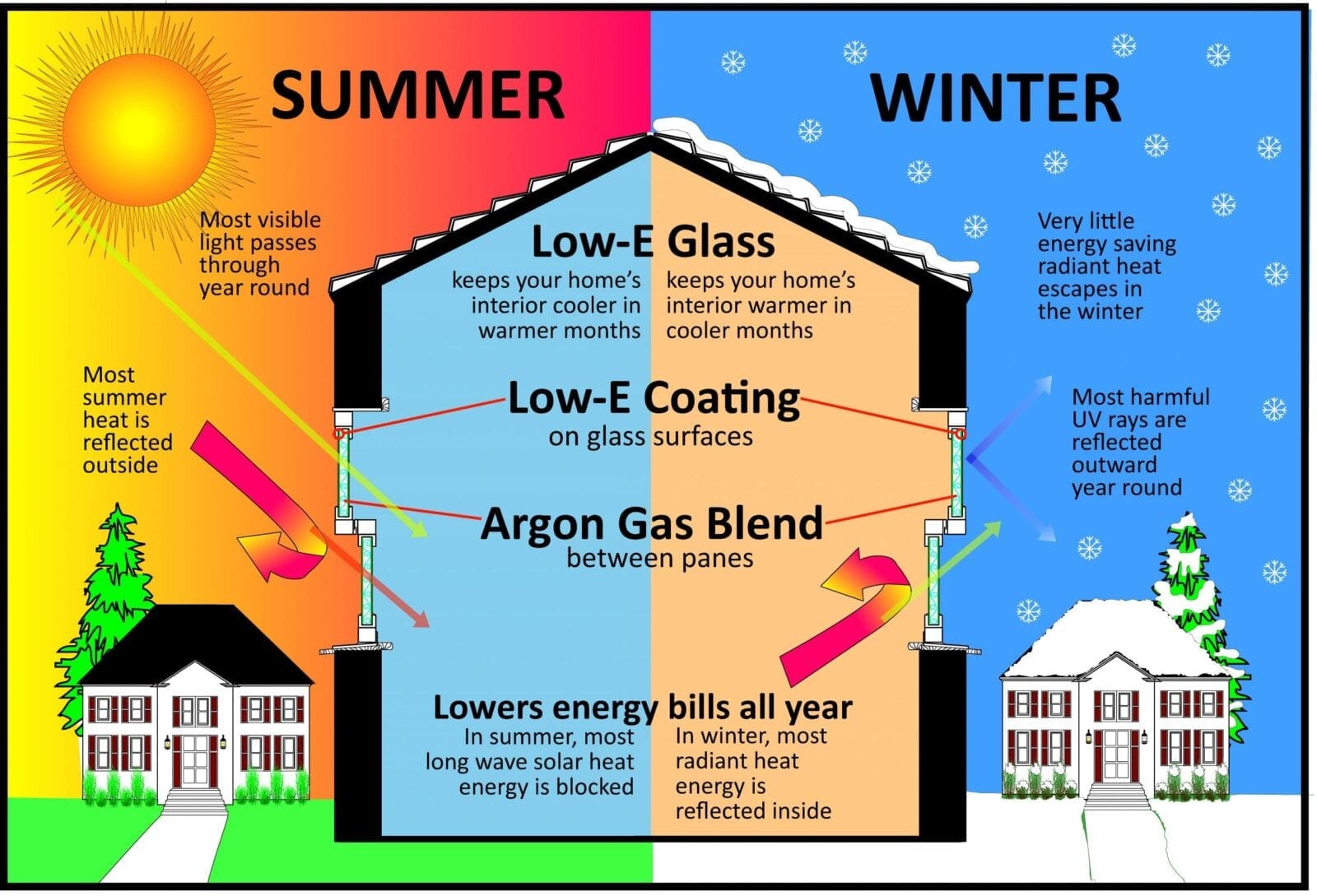
Chapter 3: Enhancing Window Performance Through Glazing Options
As home owners seek to optimise the energy efficiency and comfort of their living spaces, exploring glazing options emerges as a important aspect of window enhancement. Understanding the mechanisms and benefits associated with various glazing solutions empowers individuals to make informed decisions tailored to their specific needs and environmental conditions.
3.1 Double and Triple Glazing
3.1.1 Mechanism and Benefits
Double and triple glazing systems involve multiple layers of glass separated by gas-filled spaces, offering enhanced insulation compared to single-pane windows. This design reduces heat transfer through the window, improving thermal comfort and minimising energy consumption for heating and cooling.
3.1.2 Factors to Consider for Installation
When considering double or triple glazing, several factors warrant attention to ensure optimal performance. These include selecting the appropriate gas fill (such as argon or krypton) for the insulating spaces, choosing glass thickness and coatings tailored to climate needs, and assessing the structural integrity of the window frame to accommodate the additional weight.
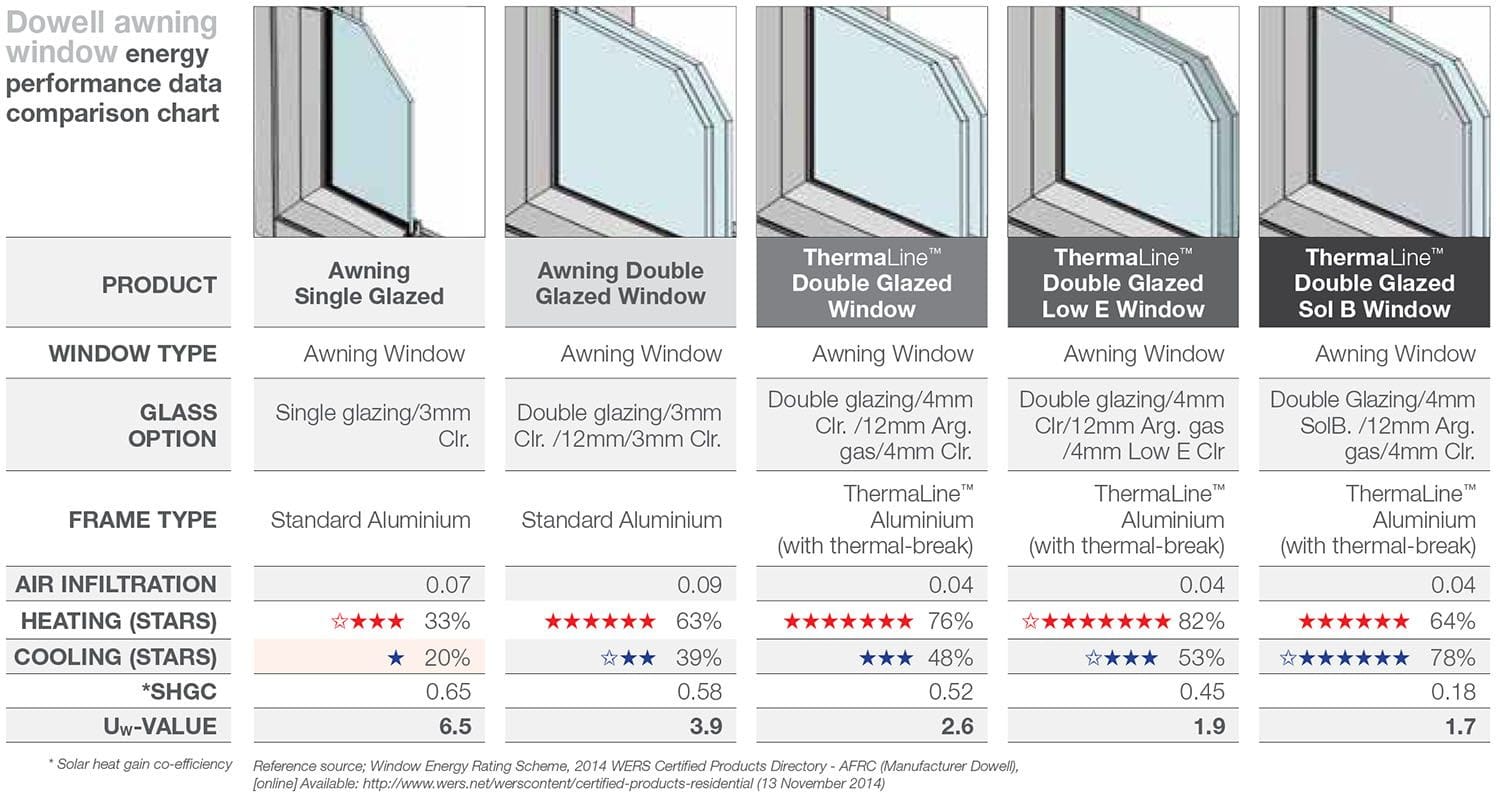
3.2 Glass Coatings and Tints
3.2.1 Role of Low-E Coatings
Low-emissivity (Low-E) coatings are thin, transparent layers applied to glass surfaces to reduce heat transfer by reflecting infrared radiation. By minimising heat loss during winter and heat gain during summer, Low-E coatings enhance the overall energy efficiency of windows, contributing to year-round comfort and cost savings.
3.2.2 Tuning Low-E Coatings for Climate
Optimising Low-E coatings involves tailoring their properties to specific climate conditions. For colder climates, a higher solar heat gain coefficient (SHGC) may be desirable to harness solar heat during winter, while in warmer climates, a lower SHGC helps reduce cooling loads. Selecting the appropriate Low-E coating ensures optimal performance across varying environmental contexts.
3.2.3 Considerations for Glass Tints
Glass tints offer another avenue for controlling solar heat gain and glare while maintaining visibility and aesthetics. Tints can range from subtle to dramatic, with options such as bronze, gray, or reflective coatings. When selecting tinted glass, factors such as visible light transmission (VLT), UV protection, and local building regulations should be taken into account.
3.3 Selecting Optimal Glazing Solutions
3.3.1 Guidelines Based on Climate Zones
Guidelines based on climate zones help home owners navigate the selection process by recommending glazing solutions tailored to regional weather patterns. By aligning glazing specifications with climate-specific performance requirements, individuals can achieve optimal energy efficiency and comfort outcomes.
3.3.2 Utilising the Window Energy Rating Scheme (WERS)
The Window Energy Rating Scheme (WERS) provides a standardised framework for evaluating the energy performance of windows and doors. By consulting WERS ratings, home owners gain valuable insights into the thermal performance of different glazing options, facilitating informed decision-making and promoting energy-efficient building practices.
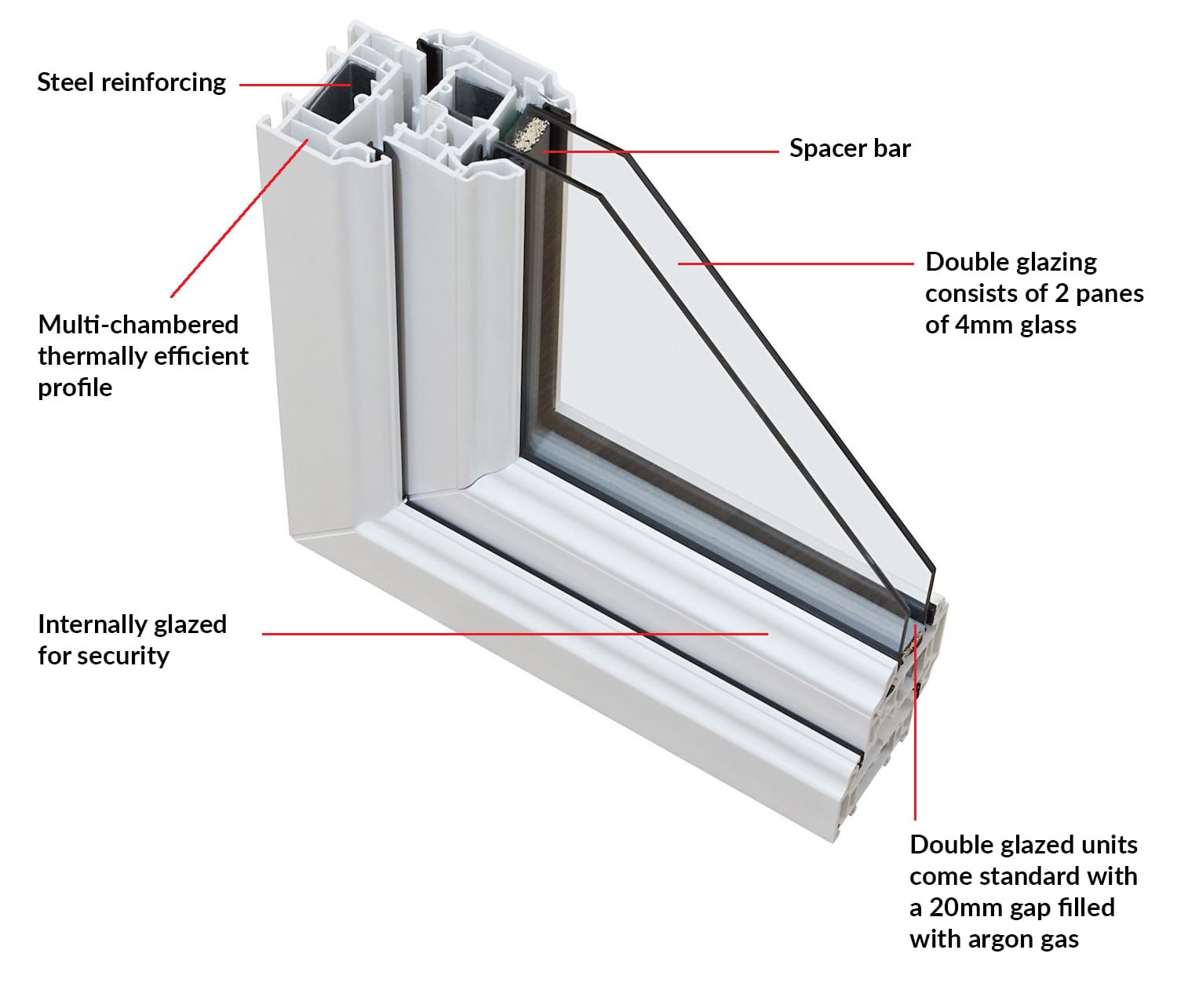
Chapter 4: Exploring Frame Options for Enhanced Insulation
As home owners strive to optimise the energy efficiency and thermal performance of their properties, exploring frame options emerges as a critical aspect of window enhancement. Frames play a pivotal role in providing structural integrity, minimising heat transfer, and contributing to overall insulation levels. By understanding the characteristics and benefits of various frame materials, individuals can make informed decisions tailored to their specific needs and sustainability goals.
4.1 All-Aluminium Frames vs. Thermal Break Frames
4.1.1 Understanding Thermal Break Technology
Thermal break frames feature a barrier (often made of polyamide) inserted between inner and outer aluminium sections to disrupt thermal conductivity. This innovative design significantly reduces heat transfer through the frame, minimising energy losses and enhancing overall window performance. By incorporating thermal break technology, home owners can improve insulation levels and achieve greater comfort while reducing heating and cooling costs.
4.1.2 Performance Comparison
When comparing all-aluminium frames to thermal break frames, the difference in thermal performance is striking. All-aluminium frames, while durable and lightweight, lack the insulation properties necessary to prevent heat transfer effectively. In contrast, thermal break frames offer superior thermal efficiency, making them the preferred choice for energy-conscious individuals seeking to maximise the performance of their windows.
4.2 Alternative Frame Materials
4.2.1 Timber Frames
Timber frames have long been favoured for their natural aesthetic appeal and excellent insulation properties. Wood exhibits low thermal conductivity, making timber frames highly effective at reducing heat transfer and maintaining interior comfort levels. Additionally, timber frames are renewable and biodegradable, aligning with sustainable building practices and environmental stewardship.
4.2.2 uPVC Frames
uPVC (unplasticised polyvinyl chloride) frames are renowned for their durability, low maintenance requirements, and thermal performance. These frames offer excellent insulation properties, effectively reducing heat loss and enhancing energy efficiency. Additionally, uPVC frames are resistant to rot, corrosion, and termite damage, ensuring long-term reliability and structural integrity.
4.2.3 Fibre-Reinforced Plastic Frames
Fibre-reinforced plastic (FRP) frames combine the strength and durability of fibreglass with the thermal insulation properties of polymer materials. FRP frames offer exceptional resistance to moisture, corrosion, and temperature fluctuations, making them ideal for harsh environmental conditions. With their high strength-to-weight ratio and low thermal conductivity, FRP frames provide reliable insulation and structural support for windows.
4.3 Evaluating Frame Longevity and Environmental Impact
When selecting window frames, considerations extend beyond thermal performance to encompass longevity and environmental impact. Assessing factors such as material durability, maintenance requirements, recyclability, and embodied energy helps individuals make sustainable choices aligned with their values and long-term objectives. By prioritising frame materials that offer both superior insulation and minimal environmental footprint, home owners can enhance the energy efficiency and sustainability of their homes while maximising comfort and cost savings.
Chapter 5: Additional Strategies for Window Improvement
When it comes to optimising window performance, home owners can explore various additional strategies beyond glazing and framing options. These supplementary approaches offer opportunities to enhance insulation, reduce heat transfer, and improve overall energy efficiency. By considering these alternative solutions, individuals can tailor their window improvements to address specific needs and achieve optimal results.
5.1 Secondary Double Glazing
5.1.1 Overview of Aftermarket Solutions
Secondary double glazing involves installing a supplementary layer of glass or acrylic over existing single-glazed windows to create an additional barrier against heat loss and noise transmission. This cost-effective solution offers improved insulation without the need for full window replacement, making it an attractive option for home owners seeking to enhance comfort and energy efficiency.
5.1.2 DIY vs. Professional Installation
While some homeowners may opt for DIY secondary glazing kits, professional installation ensures proper fitment, seal integrity, and optimal performance. Experienced installers can assess individual window requirements, recommend suitable materials, and provide tailored solutions to maximise insulation benefits. By consulting with professionals, home owners can achieve superior results and long-term satisfaction with their secondary glazing installations.
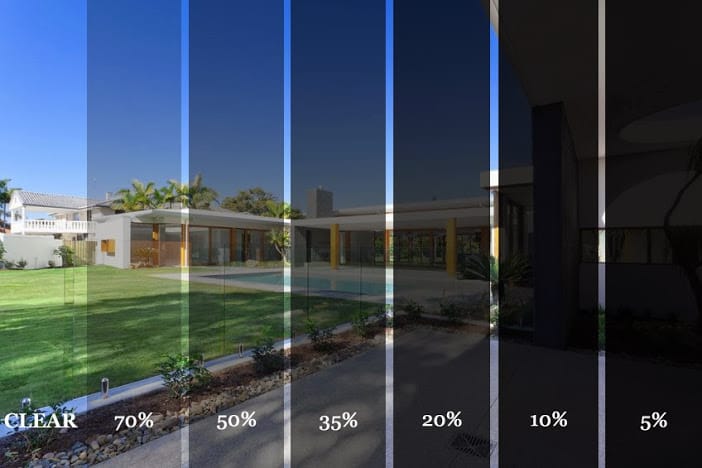
5.2 Window Films
5.2.1 Types and Applications
Window films, such as solar control films and low-emissivity (Low-E) films, offer versatile solutions for improving window performance. Solar control films reduce solar heat gain and glare, enhancing comfort and reducing reliance on air conditioning. Low-E films minimise heat transfer through windows while allowing natural light transmission, maintaining interior comfort levels and reducing heating and cooling costs.
5.2.2 Considerations for Installation and Longevity
Proper installation is required to maximise the effectiveness and longevity of window films. Professional installation ensures precise application, bubble-free adhesion, and durability against environmental factors. Additionally, selecting high-quality films with UV-resistant coatings and warranties against fading and peeling ensures long-term performance and protection of investment.
5.3 Glass Replacements and DIY Options
5.3.1 Replacing Glass with Double-Glazed Units
For home owners with single-glazed windows, replacing glass panes with double-glazed units offers significant improvements in insulation and energy efficiency. Double-glazed windows feature two glass panes separated by a spacer filled with insulating gas, reducing heat transfer and enhancing thermal performance. DIY options may be available for skilled individuals, but professional installation ensures proper sealing and insulation for optimal results.
5.3.2 Risks and Considerations for DIY Projects
While DIY glass replacement projects may seem cost-effective, they pose risks if not executed properly. Improper installation can compromise seal integrity, leading to air leakage, condensation, and reduced insulation effectiveness. Additionally, DIY projects may void warranties and compromise window performance, necessitating costly repairs or replacements in the future. Consulting with professionals helps mitigate risks and ensures successful outcomes for window improvement projects.
5.4 Insulating Window Coverings
5.4.1 Role of Curtains and Blinds
Insulating window coverings, such as curtains and blinds, offer simple yet effective solutions for reducing heat transfer and enhancing comfort. Thick, tightly woven fabrics provide additional insulation, minimising heat loss during colder months and heat gain during warmer months. By strategically opening and closing curtains and blinds, home owners can regulate interior temperatures and reduce reliance on heating and cooling systems.
5.4.2 Pleated and Cellular Blinds for Enhanced Insulation
Pleated and cellular blinds feature honeycomb-like structures that trap air, creating a barrier against heat transfer and improving thermal performance. These innovative blinds offer superior insulation compared to traditional fabric blinds, reducing energy consumption and enhancing comfort year-round. By investing in pleated or cellular blinds, home owners can achieve significant energy savings and create a more sustainable living environment.
Chapter 6: Conclusion
In conclusion, understanding the complexities of window performance and implementing effective strategies for improvement are crucial steps towards achieving energy efficiency and comfort in residential and commercial spaces. By addressing heat transfer mechanisms, selecting appropriate glazing options, and choosing the right frame materials, individuals can significantly reduce energy consumption, lower utility costs, and create more sustainable living environments.
Throughout this article, we have explored the various factors influencing window performance, including heat transfer mechanisms, glazing options, and frame materials. Key points highlighted the importance of considering whole-window U-value (Uw) and solar heat gain coefficient (SHGCw) in selecting energy-efficient windows tailored to specific climate conditions. Additionally, we discussed the benefits of secondary glazing, window films, glass replacements, and insulating window coverings as supplementary strategies for enhancing window performance.
Making informed decisions when selecting windows is important to achieving optimal energy efficiency and comfort. By understanding the performance characteristics of windows and considering factors such as climate, building orientation, and budget constraints, individuals can choose solutions that meet their needs while minimising environmental impact. Professional consultation and utilisation of rating schemes like the Window Energy Rating Scheme (WERS) can further help in informed decision-making.
As the importance of energy efficiency and environmental sustainability continues to grow, encouraging sustainable practices in home improvement becomes imperative. By promoting awareness of energy-efficient technologies, advocating for eco-friendly building materials, and incentivising green building initiatives, individuals and communities can contribute to reducing carbon emissions and mitigating the impacts of climate change. Through collective efforts, we can create a more sustainable future for generations to come.



